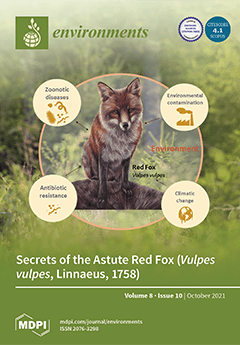Open AccessArticle
Economic and Life Cycle Analysis of Passive and Active Monitoring of Ozone for Forest Protection
by
Elisa Carrari, Alessandra De Marco, Andrea Laschi, Ovidiu Badea, Laurence Dalstein-Richier, Silvano Fares, Stefan Leca, Enrico Marchi, Pierre Sicard, Ionel Popa, Yasutomo Hoshika, Alessandro Materassi, Giacomo Pallante, Diana Pitar and Elena Paoletti
Cited by 4 | Viewed by 4548
Abstract
At forest sites, phytotoxic tropospheric ozone (O
3) can be monitored with continuously operating, active monitors (AM) or passive, cumulative samplers (PM). For the first time, we present evidence that the sustainability of active monitoring is better than that of passive sensors,
[...] Read more.
At forest sites, phytotoxic tropospheric ozone (O
3) can be monitored with continuously operating, active monitors (AM) or passive, cumulative samplers (PM). For the first time, we present evidence that the sustainability of active monitoring is better than that of passive sensors, as the environmental, economic, and social costs are usually lower in the former than in the latter. By using data collected in the field, environmental, social, and economic costs were analyzed. The study considered monitoring sites at three distances from a control station in Italy (30, 400, and 750 km), two forest types (deciduous and Mediterranean evergreen), and three time windows (5, 10, and 20 years of monitoring). AM resulted in more convenience than PM, even after 5 years, in terms of O
3 depletion, global warming, and photochemical O
3 creation potential, suggesting that passive monitoring of ozone is not environmentally sustainable, especially for long time periods. AM led to savings ranging from a minimum of EUR 9650 in 5 years up to EUR 94,796 in 20 years in evergreen forests. The resulting social cost of PM was always higher than that of AM. The present evaluation will help in the decision process for the set-up of long-term forest monitoring sites dedicated to the protection of forests from O
3.
Full article
►▼
Show Figures





